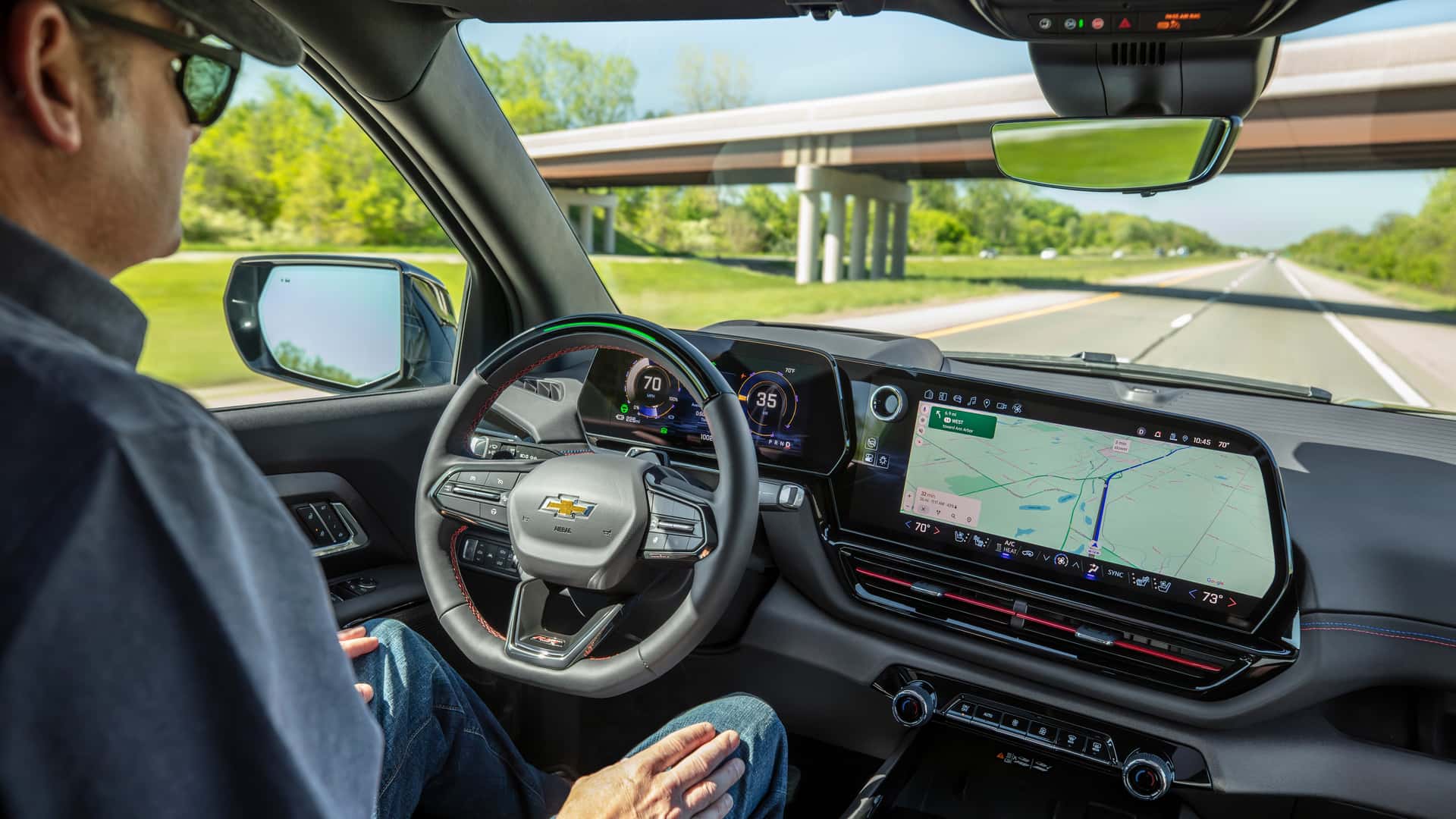Hands-Free Driving Becomes the Most Wanted Car Feature
More American car buyers are eager for hands-free driving features in their next vehicles. This is now the most sought-after car feature, according to a study by AutoPacific. Examples include GM’s Super Cruise and Ford BlueCruise.
Americans are increasingly interested in the idea of letting their cars handle the driving.
According to a study by the market research firm AutoPacific released on Thursday, hands-off, eyes-on driver-assistance systems that work on highways are the number one most desired feature among new car buyers. The firm surveyed Americans planning to buy a new car in the next three years and found that 43% want this capability, roughly double the results from last year.
Wireless charging pads for smartphones took the top spot in last year’s survey, indicating a significant shift in the kind of technology people now want in their cars.
You can think of hands-off, eyes-on systems like cruise control, but on a much larger scale. Under a driver’s watchful eye and on approved highways, they can keep a car in its lane, maintain a safe distance from other vehicles, and even make automatic lane changes to pass slower cars. Most adaptive cruise control/lane centering systems require drivers to keep their hands on the wheel, but an increasing number—like GM’s Super Cruise and Ford’s BlueCruise—allow drivers to go hands-free.
In my experience, the best advanced driver-assistance systems (ADAS) can be a lifesaver for long, monotonous highway drives or endless traffic jams. I never realized how much mental energy monotonous highway driving consumes until I started using hands-free features like Super Cruise, which tend to leave me feeling much less drained.
It makes sense that as more people become familiar with these features in their own cars and through friends, they will decide they need them themselves. Super Cruise is now in over 500,000 Chevy, Cadillac, and GMC vehicles, GM said this week. That’s what AutoPacific’s research shows as well.
“AutoPacific’s research has shown that autonomous driving and ADAS features have struggled to capture strong demand from new vehicle buyers over the past couple of years primarily due to unproven technology and lack of consumer comfort with their vehicle having control over situations,” the firm said in a statement. “It seems the tune has shifted as some technologies become more prominent in new vehicles and consumers gain experience and confidence in them.”
Consumers are generally more comfortable allowing some or all control to their cars compared to last year, AutoPacific found. Partly this is because the survey respondents this year leaned slightly younger (at 39 years old), and younger buyers are more tech-savvy. Today, 48% of buyers want their car to drive itself so they can do other things in the car. This is up 10 percentage points from last year.
Several other ADAS features jumped in popularity this year and made the top 15 most in-demand features, including rearward automatic emergency braking (tied for first place) and fully autonomous highway and city driving.
No matter how much people may want it—you know I do too—hands-off, eyes-off capability is practically nonexistent in consumer cars. There is no car you can buy today that will take you anywhere while you read a book or take a nap.
The closest system to that is Mercedes-Benz Drive Pilot. Drive Pilot goes beyond Super Cruise and its like, requiring no driver attention to function. However, it only works in good weather conditions, at low speeds, and on highways in California and Nevada.

I’m Rohan Mehta, the voice behind KhelRe—a trusted and steadily growing blog dedicated to electric vehicles (EVs) in India. With over five years of experience as a tech and automotive blogger, I turned my frustrations with owning an EV into a mission: to help others make more intelligent choices in this fast-evolving world of electric mobility.
I’ve been an early adopter of EV technology—I repurchased my first electric scooter in 2019. That experience opened my eyes to both the promises and the pitfalls of this new mode of transport. From slow charging times and range anxiety to misleading specs and hidden costs, I’ve faced it all. But instead of walking away, I decided to write about it.
That’s how KhelRe was born—a no-nonsense, hands-on blog where I share practical, real-world reviews of EV cars, bikes, and scooters. I break down features, range, performance, and pricing from a user-first perspective. I take pride in simplifying complex tech into clear, valuable insights—offering tips, ownership stories, and advice you won’t find in flashy press releases or sales brochures.
Whether you’re a first-time EV buyer or just a curious auto enthusiast, my goal is to help you navigate the EV landscape with confidence. My motto: “EV knowledge should come from experience, not just brochures.”
When I’m not test-driving the latest e-scooter or comparing charging networks, you’ll probably find me tinkering with my garage EV setup, chatting with fellow enthusiasts online, or sipping chai while writing my next blog post from a cosy local café.

